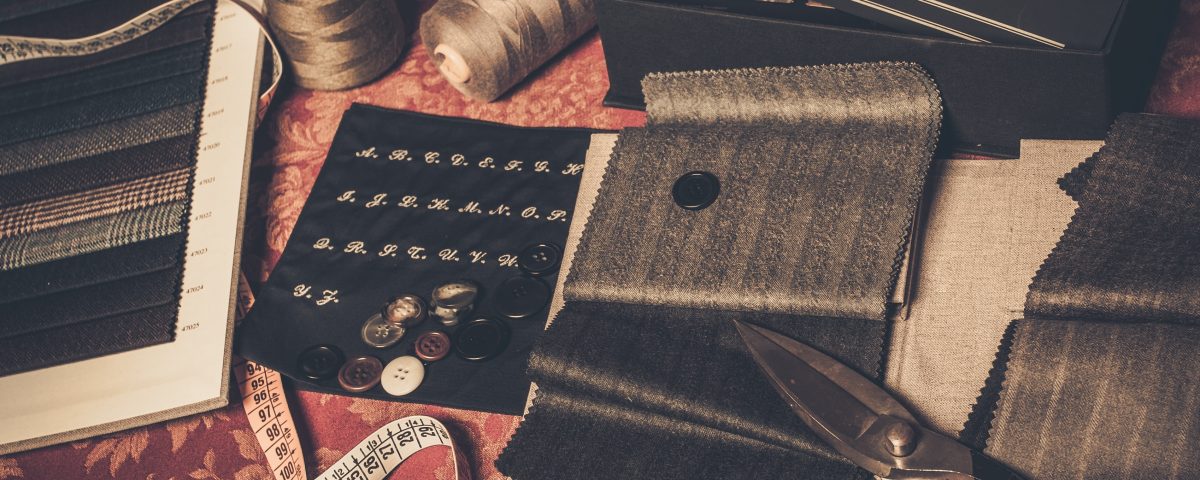Using Consumer Store-Bought Fabric for Commercial Purposes & The First Sale Doctrine

Drafting a Shipping & Returns Policy
December 19, 2016
The 4Ts – Trump, Tax, Trade and Technology – and Their Impact on the Fashion Industry.
January 29, 2017As with all businesses, getting into making clothes means you will most likely want to start small. This usually means buying smaller batches of fabric from consumer stores, as opposed to wholesale manufacturers, until you grow your business enough to warrant the purchase of more material. Many fabrics sold in consumer stores are however trademarked or copyrighted and meant for personal use only. How does that change the way you market and sell the garments you make? This is where the first sale doctrine comes in. Here are a few elements to know and to keep in mind in order to avoid any potential trouble with intellectual property rights holders.
This post is meant to be taken as general information, not legal advice. If you need assistance with marketing your garments or have any questions about the first sale doctrine, you may email hello@lawontherunway.com.
What is the first sale doctrine?
The first sale doctrine, also referred to as the ‘right of first sale” is a legal concept that applies to copyright and trademark law. It allows these intellectual property holders to only enforce their rights on an item’s first sale. The first sale doctrine is the reason why you can buy an item with a certain intellectual property value and resell it on a secondary market without infringing upon anyone’s rights. In the fashion industry, the most common application of the first sale doctrine is during the purchase of trademarked or copyrighted fabric (fabric with a sports team logo or a cartoon character for instance).
Many manufacturers will often add a tag that says “for personal use only” or “not for commercial use” to try to retain some sort of control over their intellectual property. Courts have however previously established that such “one-sided directives” do not constitute a valid legal agreement. The first sale doctrine therefore applies regardless.
How do you make sure the first sale doctrine will protect the sale of your garments?
In order to be protected by the first sale doctrine, you must make sure customers know the product you are selling does not come from the trademark or copyright owner and that the two of you are not affiliated in any way and that you are not sponsored by them either. The first sale doctrine will not protect the sale of your merchandise if consumer confusion is likely. Courts have established that the lack of association between a vendor and a trademark or copyright holder must be made clear at all stages of the purchasing process. For instance, clear disclaimers on your website, visible before a customer makes a purchase, should be accompanied with other messages, on the packaging or inside the garments themselves (on a tag).
Make sure you also put some thought not only into the name of your commerce, but also into the name of the garments you are selling. Make it clear that your clothes are made from a certain rights holder’s fabric rather than being made by said rights holder. Your commerce should not lead to any potential confusion. Ideally, you should make your customers understand in as many ways as possible (by adding a disclaimer to your About page, on the listing itself, in your terms & conditions, on receipts, etc) that the products you sell do not come from the original rights holder and are not related to them.
Please be conscious of the fact that the first sale doctrine does not allow you to do anything you want with a piece of fabric. For instance, you cannot buy trademarked or copyrighted fabric and decide to reproduce the logos on an old piece of blank fabric or print said logos from an image you found online. Doing so does constitute in infringement and the first sale doctrine is absolutely not applicable in that case, as it only applies to the sale of the actual piece of fabric you have purchased and not any subsequent copies.
Also keep in mind that following all these recommendations does not guarantee you will not receive a potential cease and desist letter from a rights holder. You therefore might want to keep track of your fabric purchases by keeping a copy of your receipts as well as some swatches, just in case you eventually have to prove that the fabric was legally purchased and that it is not a copy.
As with all Law On The Runway posts, this is just general information, not legal advice. If you have any questions, please send us an email at hello@lawontherunway.com

